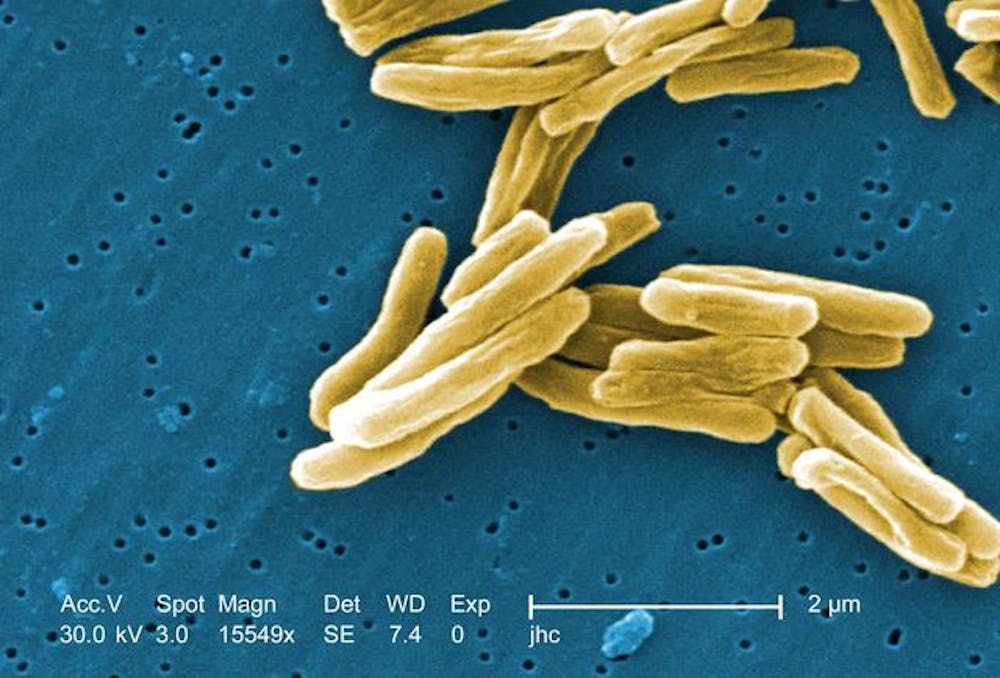As the semester reaches its halfway mark and midterms ramp up before spring break, take a break to learn about this week’s breaking science news. This week includes (intentional) breaks in tuberculosis RNA, (unintentional) breakdowns on the moon, gene editing and particle masses.
Odysseus lander enters standby mode
The last two weeks were filled with milestones in lunar exploration. On Feb. 22, the Intuitive Machines’ Odysseus lander reached the moon, marking the first U.S. lunar mission since Apollo 17 in 1972. The lander, intended to study the moon’s south pole, was sponsored by $118 million from NASA and carried six lunar experiments on board for the agency. Intuitive Machines reported a touchdown following a rough landing that broke one of the lander’s legs. This past week, however, the extent of the damage became clear as the lander — stranded on its side — struggled to receive enough solar power before a lunar night. On Feb. 29, the company announced that a slowly dying Odysseus would be entering a standby until the next lunar day in a few weeks.
Despite this setback, Intuitive Machines is the first private company to accomplish a lunar landing, placing it among the USSR, U.S., China, India and Japan as the sixth entity to do so. This landing follows a failed mission by Astrobotic Technology in January. It is also not the first private entity to produce moon litter as both Israel’s SpaceIL Beresheet and Japan’s ispace Hakuto-R Mission 1 crashed into the lunar surface in the past few years. Despite this setback, the U.S. continues its journey back to the moon with the Artemis II mission scheduled for September 2025.
Epigenome editing reduces cholesterol levels in mice without altering DNA sequences
Many existing genome-editing technologies, such as CRISPR-Cas9, manipulate genetic activities by directly changing the DNA sequence. On the other hand, epigenome editing alters chemical tags that regulate genetic activity without changing the DNA sequence.
Recently, a group of researchers from Italy used epigenome editing to target the PCSK9 gene, which regulates the production of cholesterol. The team designed a messenger molecule called zinc-finger proteins which are delivered together with three pieces of proteins that can add methyl groups to inhibit the activity of the PCSK9 gene through DNA methylation.
The effect of epigenome editing, which reduced PCSK8 activity, remained for 330 days. Although the impact is not permanent, it is still considerably long-term and avoids the irreversible effects of manipulating DNA sequences. This study adds to the budding field of examining epigenetic editing therapies.
Physicists venture to find neutrino mass
This week, the NuMass 2024 conference brought particle physicists from around the world to Genoa, Italy for a discussion of experiments aimed at discovering the neutrino’s mass. Coming in three variants or “flavors,” neutrinos are the most abundant particles with mass in the universe, emitted whenever atoms undergo fission or fusion. Since they only interact with gravity and the weak force, they can pass through regular matter with almost no trace, they were long thought massless due to their tiny size.
The conference highlighted several groups working on determining neutrino mass, among them KATRIN, Project 8 and PTOLEMY. KATRIN, a German experiment, studies the beta decay of the hydrogen isotope tritium which releases an electron and a neutrino at specific energy levels. The team hopes to determine the mass of the neutrino via the electron‘s energy of the electron — a much easier task as electrons are four million times more massive than neutrinos. KATRIN has set an upper bound for neutrino mass at 0.8 electron volts (eV).
Three other experiments are underway that may displace KATRIN’s record. One is an experiment at CERN that captures electrons released by radioactive holmium-163 isotopes. Two more are MIT’s Project 8 (which utilizes magnetically trapped tritium gas which shows the potential to increase sensitivity to 0.04 eV) and PTOLEMY which will use atomic tritium embedded in graphene strips.
Tuberculosis bacteria RNA transcription is often incomplete
A study published this week in Nature by a team at Rockefeller University showed that most RNA transcripts in Mycobacterium tuberculosis (Mtb) are incomplete. This fact is a result of Mtb RNA polymerases intentionally stopping. Mtb is the bacterial cause of tuberculosis, the deadliest infectious disease globally, killing over 1.3 million people per year. Tb is a curable and preventable disease, and the majority of Tb deaths occur in developing countries.
The Rockefeller team used a sequencing method to track the 5’ and 3’ ends of the RNA molecule; they found that the 5’ end remained aligned with the transcription start site while 3′ ends were located 200–500 nucleotides downstream. This, alongside other findings, led the team to suggest that Mtb used intentional pausing as a key feature of its transcriptome which may play a role in the bacteria’s remarkable ability to adapt to antibiotics.





